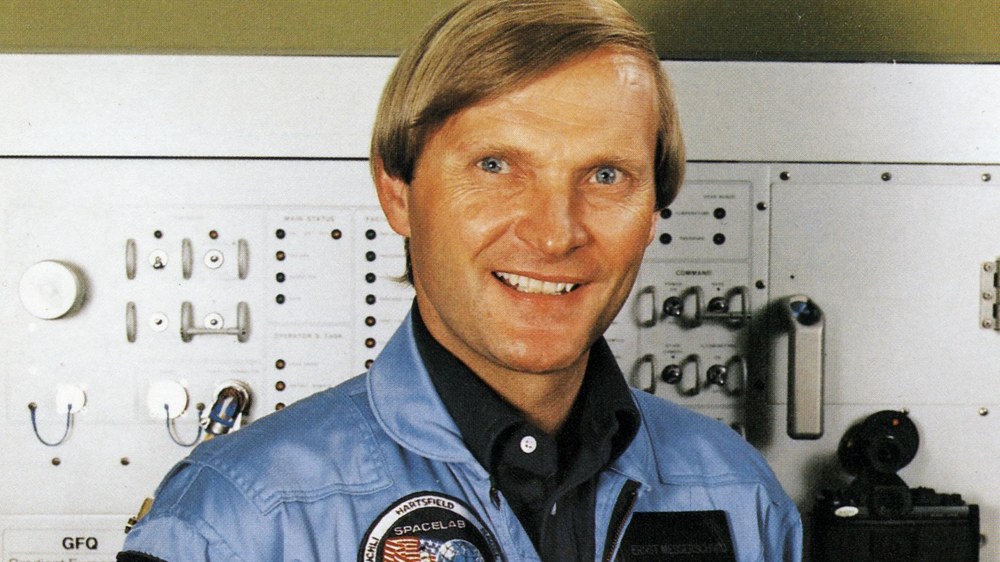Ernst Messerschmid

Two Germans, Ernst Messerschmid and Reinhard Furrer, were aboard the Challenger Space Shuttle mission that launched on 30 October 1985. Called the D1 mission, it was the first Spacelab mission with German mission management and responsibility. The entire payload was controlled, for the first time, from outside NASA's mission control centres – from the German Space Operations Center of the German Institute of Aviation and Spaceflight Research and Development (Deutschen Forschungsanstalt für Luft- und Raumfahrt; DFVLR, a precursor of present-day DLR) at Oberpfaffenhofen, near Munich. Spacelab D1 was a multi-disciplinary mission hosting 76 experiments in fields of materials and life science, navigation, communication and technology.
Born on 21 May 1945, Messerschmid studied physics at Tübingen and Bonn, finishing in 1972. Messerschmid then went on to work for three years at the European Organisation for Nuclear Research (CERN), before completing his doctorate at the University of Freiburg (Universität Freiburg) in 1976; this led on to his research activities at the German Electron Synchrotron (Deutsches Elektronen-Synchrotron; DESY) in Hamburg. It was here that he developed his interest in space technology, and he participated in the European Space Agency's (ESA) initial astronaut selection. In 1978 he moved to DFVLR at Oberpfaffenhofen and participated in research on satellite communications.
In 1983 Messerschmid was selected as a research astronaut, after which two years of training lay before him prior to the D1 mission launch. Along with two other Germans, Ulf Merbold and Reinhard Furrer, the aspiring astronaut underwent a comprehensive training program that included medicine and an introduction to spaceflight.
The Spacelab D1 mission was not just a premiere for Furrer and Messerschmid. The German Space Operations Center on the DFVLR site at Oberpfaffenhofen was on the threshold of its biggest assignment – the first German mission to the European space laboratory Spacelab in the US Space Shuttle. The two astronauts were not alone in gaining worldwide fame following the successful mission launch – Oberpfaffenhofen became known as the 'Bavarian Houston' to many people.
Messerschmid remained true to his passion even after his flight, and his career led him to become the Director of the Institute of Space Systems (IRS) at the University of Stuttgart (Universität Stuttgart) before heading ESA's European Astronaut Centre in Cologne between 2000 and 2004.
In 2005, Ernst Messerschmid returned to the Institute of Space Systems at the University of Stuttgart.
